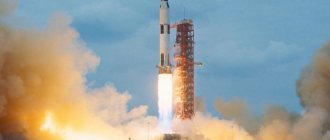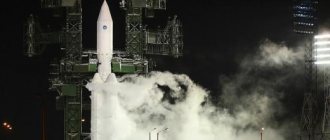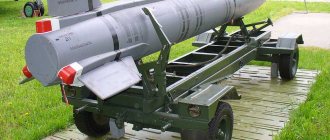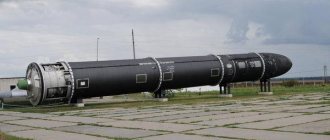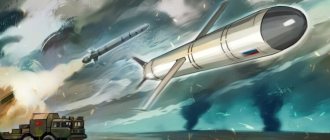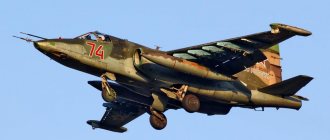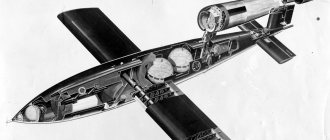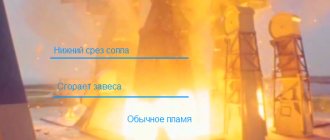Soyuz launch vehicles are the workhorses of Russian manned space exploration. Today, only they can deliver people to the ISS On October 4, 1957, the first artificial satellite AES-1 was launched into orbit of our planet. More than sixty years have passed since then, and today space flights have long been commonplace. The exploration of near-Earth space became possible thanks to launch vehicles (LVs), a special class of aircraft capable of defeating gravity.
Modern chemical fuel launch vehicles can hardly be called an ideal means of conquering the Universe. After each launch, these complex multi-ton products burn up in the atmosphere or turn into a pile of scrap metal. This is why spacecraft launches are so expensive. However, for now this is the only way to overcome the gravity of our planet, and it is unlikely that humanity will come up with anything more effective in the coming years.
For many years, the monopoly on the missile sector belonged to states, but today the situation is changing. The trend of the last decade has been the rapid development of private space companies, which not only build excellent rockets, but also have plans to colonize other planets. The most famous of them is undoubtedly Elon Musk's SpaceX.
What are space rockets
A launch vehicle is a type of ballistic missile that is capable of launching a payload beyond the atmosphere of a planet. As a rule, launch vehicles have several stages; vertical or air launch is used to launch them. Space rockets can launch cargo into low reference, geostationary transfer and geostationary orbits (GEO).
The payload delivered into orbit is only a small fraction (a paltry 1.5-2.0%) of the total weight of the rocket. Its bulk consists of structural elements, as well as oxidizer and fuel. It turns out that the launch vehicle lifts itself first and only to a small extent the payload.
The Angara rocket is the hope of Russian cosmonautics.
It should replace the well-deserved, but already outdated “Protons”. To increase efficiency, the rockets are made up of several stages, each of which has a fuel tank and an engine and, in fact, is an independent rocket. The stages are turned on one after another, operate until the fuel is completely exhausted, and then reset, reducing the total weight of the launch vehicle. A single-stage rocket is also capable of reaching outer space, which was proven by the German V-2, but it cannot enter a stable orbit of the planet’s satellite or launch a payload onto it.
There are two variants of the launch vehicle layout: with transverse and longitudinal separation of stages. In the first case, they are located one after the other and are turned on one by one. A similar scheme, for example, was used on Musk’s Falcons. In the second, several small rockets of the first stage are symmetrically placed around the body of the second and operate simultaneously.
A combined scheme is also used. For example, it is used on Russian Soyuz and Proton aircraft. In this case, the first and second stages are separated transversely, and after their separation the third stage begins to operate.
The most important element of a launch vehicle is the engine. It throws out hot matter and, in accordance with Newton's third law, pushes the apparatus in the opposite direction. Depending on the type of fuel used, launch vehicles are:
- liquid rocket engines (LPRE);
- solid propellant (solid propellant motor);
- combined.
Solid propellant engines are characterized by their simple design and low cost, but space rockets typically use liquid fuel engines. They allow you to adjust the traction over a wide range, as well as perform repeated switching on and off. The latter feature is especially important when maneuvering in orbit. There are many types of liquid propellant engines: with open and closed cycle, with partial and complete gasification of the fuel.
The Electron launch vehicle is designed to launch light and ultra-light satellites into orbit. The company Rocket Lab is developing these rockets.
Kerosene, heptyl, liquefied hydrogen and methane, and hydrazine are used as fuel for liquid rocket engines. The most common oxidizing agents are liquid oxygen and nitrogen compounds.
The most important characteristic of any launch vehicle is the payload weight that it can throw into low Earth orbit (LEO). Based on it, the following classes of launch vehicles are distinguished:
- Ultralight. The output load does not exceed several tens of kilograms;
- Easy. LVs can launch a mass of up to 5 tons into orbit;
- Average. From 5 to 20 tons;
- Heavy. This class includes rockets capable of lifting from 20 to 100 tons into LEO;
- Super heavy. Payload exceeds 100 tons.
The American super-heavy launch vehicle Saturn 5 is considered the most powerful and lifting rocket ever built. It was used in the Apollo program and could launch 140 tons into LEO.
Design features 11A511
The Soyuz 11A511 rocket consists of three stages with accelerators on the first “B”, “C”, “G” and “D”, two blocks “A” and “I” (second and third stages), a head fairing, a payload adapter cargo and crew emergency rescue systems (ESS). The design uses modernized engines of the two-stage R-7A ICBM missile and the three-stage Voskhod launch vehicle. Initially, the third stage unit was modernized, which made it possible to improve the energy performance of the launch vehicle; subsequently, other stages were also modified. Their appearance has not changed, but the content and capabilities have become new:
- A new telemetry system was installed on block “A”.
- The on-board control cable network has been replaced with a lighter one.
- The inclination of the ship's orbit relative to the equatorial plane has been reduced by more than 10°.
- The length and weight of the cable network of the “I” block have been reduced.
- Block “A” engines have been replaced.
- The strength of some elements of the first stage has been strengthened.
In general, the appearance of the Soyuz launch vehicle differs from previous launch vehicles - first of all, in the head fairing with four stabilizers and the conical shape of the first stage blocks, as well as the presence of an emergency system at the top.
A little history
The Chinese were the first to build rockets back in the 2nd century BC. e. These “devices” were filled with gunpowder and used for fireworks and other entertainment. They have repeatedly tried to use missiles in military affairs, however, without much success. Only at the beginning of the 19th century did Colonel Congreve manage to create more or less effective combat missiles for the British army. Later they were adopted into service in Prussia, Russia, Sweden, and Saxony.
The idea of using rockets for space exploration was first expressed by Konstantin Tsiolkovsky at the beginning of the 20th century, and he also proposed a multi-stage launch vehicle design.
The American Robert Goddard is considered the father of modern rocketry, who, unlike Tsiolkovsky, was more interested in the practical side of the issue. He was the first in the world to create a liquid-propellant rocket and successfully test it. This happened in 1926 - Goddard’s product rose as much as 12.5 meters!
German designer Wernher von Braun. Creator of the V-2 and Saturn 5, which took man to the moon
Rocket science was actively developing in Germany. In the 1930s, many rocket clubs and research institutes appeared in this country. The result of this boom was the first combat ballistic missile, the V-2, which the brilliant designer Wernher von Braun created for Hitler. He later played a key role in the development of the US space program.
After the end of the war, the Third Reich's missile technology fell into the hands of the Allies. The Cold War began and missiles were considered primarily as an effective means of delivering nuclear weapons - space was in second place. In the Soviet Union, the missile program was led by Sergei Korolev. He managed in the shortest possible time to create the first intercontinental rocket R-7, the civilian modification of which launched the first satellite into orbit. In 1961, Yuri Gagarin made his flight on the Vostok launch vehicle. It could deliver a payload weighing 4.72 tons to LEO. These historic launches were carried out from the Baikonur Cosmodrome in Kazakhstan.
The US got its revenge with the Apollo program, during which several missions were delivered to the Moon, and for the first time man set foot on the surface of another celestial body. This triumph would not have been possible without the unique Saturn 5 rocket, whose characteristics remain unsurpassed today.
A very interesting American project was the Space Shuttle. His idea was to create a reusable system for delivering cargo and astronauts into orbit. It consisted of a spaceship similar to an airplane, two boosters and a huge fuel tank. The shuttles took off vertically and landed on a regular runway, like an airplane. By using this design, the developers hoped to significantly reduce the cost of one launch. However, these expectations were not justified - the cost of delivering a kilogram into orbit for the shuttle turned out to be even higher than that of the huge Saturn 5.
The Energia launch vehicle and the Buran reusable spacecraft. The most technologically advanced project of the Soviet Union
The Soviet answer to the shuttle was the reusable shuttle Buran. It was launched into orbit by the Energia super-heavy class launch vehicle, capable of delivering up to 100 tons of cargo to LEO. Buran made its only unmanned flight in 1988; the program was closed in 1993.
The USA and the USSR did not remain the only “space” powers for long. By 1971, five more countries had managed to create their own launch vehicles: France, Japan, Italy, China and Great Britain. Subsequently, their number continued to grow. In recent years, private business has become actively involved in space launches; one might say that it has breathed new life into rocket science.
Description
"Soyuz" is a medium-class launch vehicle designed to launch into low Earth orbit spacecraft of the "Progress" and "Soyuz" type, as well as scientific research ("Resurs", "Foton") and socio-economic spacecraft with automatic management. The three-stage Soyuz launch vehicle (LV) was created on the basis of the R-7 rocket, and therefore belongs to the family of these rockets with the addition of a 3rd stage.
It was developed and produced at OKB-1 (now TsSKB-Progress). The project leaders were S.P. Korolev and D.I. Kozlov. Operation of the series of launch vehicles began in 1963, and by analogy with the model on which the new launch vehicle was based, they were still called “Voskhod”. Since 1966, the name “Union” has officially come into use. Over the next few decades, until the 2000s, the Soyuz rocket underwent several modifications.
What launch vehicles are in use today?
In recent years, the spacecraft launch market has been developing rapidly. Today the main players on it are: the USA, China, Russia, and the European Union.
Russia
Russian Proton launch vehicle
In our country, the state corporation Roscosmos is responsible for launching vehicles into orbit. And I must say that things are far from brilliant for her. Taking advantage of the powerful Soviet reserves, the Russian Federation remained the leader in the number of launches for almost three decades, but all good things come to an end. In 2016, the Americans took first place, and in 2022, China took the lead. It is obvious that the Russian missile fleet needs updating, and industry management needs new approaches. Today the main Russian launch vehicles are:
- "Union". This three-stage rocket can be called the “workhorse” of first Soviet and then Russian manned space exploration. It is a continuation of the concepts and ideas contained in the royal R-7 and Vostok. Over the years, many modifications of the Soyuz were created. All representatives of this family operate on the fuel pair kerosene and liquid oxygen. Today, Soyuz-2 and Soyuz-FG are in operation, with the latter being the only launch vehicle used for manned flights to the ISS. Soyuz rockets are considered one of the most reliable rockets in the world. Based on the latest modifications of the launch vehicle, it is planned to create a universal launch vehicle. Soyuz-2 is capable of throwing up to 9,200 kg of payload into LEO. The Soyuz-2.1v light-class launch vehicle is also in operation. It can deliver 2800 kg of cargo to LEO;
- "Proton". This is a heavy three-stage rocket capable of launching payloads weighing more than three tons into geostationary orbit. It was developed in the mid-60s on the basis of the UR-500 combat ballistic missile. Later, several modifications of the launch vehicle were developed, the most advanced of which is Proton-M. All rockets in the family operate on the fuel pair hydrazine (heptyl) and nitrogen tetroxide. Since the start of operation, 423 launches have taken place, of which 376 were considered successful. Despite these statistics, a decision has already been made to stop the production of Protons. In the future, this launch vehicle should be replaced by the Angara. The cost of launching one Proton is approximately 65-70 million dollars;
- "Angara". This is a promising family of launch vehicles with oxygen-kerosene engines, which will include vehicles with a payload capacity of 1.5 to 35 tons. So far, two launches of this rocket have been carried out in 2014. It is planned that the cost of launching a heavy Angara will be slightly cheaper than Delta IV Heavy, but twice as expensive as Proton.
Today, the global trend in the development of rocket science is the active attraction of private capital into this area. Russia, having qualified personnel, infrastructure and a rich scientific school, could raise its own “masks” and “bezos”. But for this we need to radically change the approach to this industry and rid it of the power of ignorant and stupid officials.
USA
Falcon Heavy and its creator Elon Musk
In the United States, private companies are engaged in the development and construction of rockets, and their number has grown significantly in recent years. NASA, the Pentagon and other government agencies simply order a new rocket from them or buy services for launching vehicles into orbit. The following types of launch vehicles are currently used in the United States:
- Space Launch System. This super-heavy rocket is being developed specifically for missions beyond low-Earth orbit. It is with the help of this launch vehicle that the Americans plan to study the Moon and other planets of our system. The SLS's payload capacity at the first stage will be 95 tons (in LEO), and later it will be increased to 130 tons. The Boeing company is developing the rocket. The cost of one launch is estimated at approximately $500 million, but the overall program will cost the American taxpayer $35 billion. The SLS is scheduled to take its first flight in 2022, with a manned mission planned for 2023;
- Delta IV. This is a family of medium and heavy two-stage rockets powered by liquid oxygen and hydrogen. Boeing is also their developer and manufacturer. There are five modifications of the rocket, their cost is quite high: from 160 to 400 million dollars. Delta's first launch took place in 2002;
- Falcon 9 and Falcon Heavy. These missiles have become a real breakthrough of the last decade. They are the result of the work of engineers at SpaceX, owned by Elon Musk. The most important feature of these launch vehicles is their partial reusability - the first stage returns to Earth after completing the mission. With a little maintenance it can be reused. This scheme significantly reduces the startup cost. Falcon 9 can deliver 22.8 tons to LEO and 3.7 tons to GEO. The rocket is already being used to resupply the ISS, and in 2022 it may carry astronauts to the station for the first time. The Falcon 9 costs $62 million. Falcon Heavy is a super-heavy modular rocket consisting of the first three stages of the Falcon 9. It costs customers approximately $90 million. Now Falcon Heavy is the most payload launch vehicle of all existing space rockets;
- New Shepard and New Glenn. Another enthusiast of rocket science and space exploration is Amazon founder Jeffrey Bezos. His company Blue Origin is developing two reusable space rockets at once. The New Shepard launch vehicle is designed for space tourism. It successfully passed 12 tests, but the date of the first manned flight is still unknown. New Glenn is a heavy three-stage launch vehicle capable of delivering 45 tons of payload to LEO. Its trials are scheduled for 2022.
This is not a complete list of American space rockets and manufacturing companies working in this industry. Every year new companies and startups appear in the space technology field. Most of them go bankrupt, but those that remain afloat generate new ideas and move humanity into space.
China
Long March
5 rocket China is conquering near-Earth space with the help of the Long March family of launch vehicles. It includes light, medium and heavy devices. On December 27, 2020, Long March-5Y3 was successfully launched, capable of launching 25 tons into LEO. In the future, the Chinese plan to use this rocket to deliver cargo and astronauts to the Moon and Mars, as well as build their own orbital station. All launch vehicles in this group use exclusively environmentally friendly fuel: liquid oxygen, kerosene and liquid hydrogen.
Europe
Ariane 5. This is a heavy expendable launch vehicle designed to launch up to 21 tons of payload into LEO. Its first launch took place back in 1997, since then the rocket has launched vehicles into orbit of the planet more than a hundred times. Today, work is underway to create the next modification of the launch vehicle, the launch of which is scheduled for 2023. Ariane 5 is a fairly expensive rocket; each launch costs the European Space Agency $160-220 million.
Characteristics
The length of the Soyuz launch vehicle depends on the type of spacecraft being delivered into space, but does not exceed 50.67 m. The cross-section is 10.3 m, the transverse dimensions are the distance between the end switches of the air rudders. The total mass of the Soyuz launch vehicle in the loaded state (launch) is 308 tons. The maximum mass of fuel is 274 tons. The maximum, so-called dry total mass of the Soyuz launch vehicle is 34 tons and also depends on the type of space vehicle being launched into orbit apparatus. Total thrust developed by the launch vehicle: 413 ton-force at sea level and over 500 ton-force in vacuum. The Soyuz 11A511 rocket is capable of delivering payloads weighing 7 tons into Earth orbit. The flight time of the launch vehicle is about 9 minutes.
During breeding
The launch into orbit proceeded in a calculated manner, without emergency situations. The rocket worked well. The first cosmonaut himself spoke about this in his report at a meeting of the State Commission the day after the flight:
“About 70 seconds. The nature of vibration changes smoothly. The vibration frequency decreases and the amplitude increases. There is a kind of shaking. Then gradually this shaking subsides, and by the end of the first stage the vibration becomes the same as at the beginning of its operation. The overload gradually increases, but it is quite tolerable, as on conventional airplanes. Approximately 5g. With this overload, I was constantly reporting and communicating with the start. It was somewhat difficult to talk, as all the facial muscles were tightened. I tensed up a bit. Then the overload began to grow, reached its peak and began to gradually decrease. Then I felt a sharp drop in overload. The feeling was as if something was immediately being torn off from the rocket. Felt something like a pop. At the same time, the noise dropped sharply. It’s as if a state of weightlessness has arisen, although at this time the overload is approximately equal to 1. Then the overload appears again and begins to grow. It begins to press against the chair, the noise level is much less. For 150 sec. the head fairing separated. The process is very bright. It turned out to be a push, a clap...
When a rocket is moving, you can see from the “eye” that it oscillates a little around the longitudinal axis along the roll, but the oscillations are insignificant. The rocket seems to be alive.
Towards the end of the first stage, when the head fairing flew off, in the “vision” the horizon did not reach the upper edge a little. The rocket was moving with a certain pitch angle (the inclination of the longitudinal axis of the rocket to the plane of the local horizon - N. Ts.). Then, by the end of the second stage, it lay along the horizon and even slightly below the horizon... At 211 seconds. Overloads began to gradually increase again. The second stage turns off in approximately the same way as the first. At the same time, the same sharp drop in overloads and a drop in noise occurs, the same feeling of weightlessness.
There was weightlessness for about 10–15 seconds before the third stage was turned on. Then I heard a dull bang and the switching on of the third stage... The overload began to appear very smoothly... The pitch angle began to increase, and by the end of the operation of the third stage, approximately only half of the outer ring of the “gaze” was occupied by the horizon... The shutdown of the third stage was abrupt. The overload increased a little, and I felt a sharp bang. After about 10 seconds, separation occurred. At the same time I felt a push. The ship began to rotate slowly."
During the operation of each stage, the overload gradually increased from the initial value each time. This happened because, with constant engine thrust, the stage consumed fuel, reducing its mass. Acceleration, as the ratio of the thrust force to the mass of the rocket, gradually increased with fuel consumption, reaching a maximum when the stage tanks were almost empty.
After turning off the propulsion system, traction, acceleration and overload disappeared. To appear again with the start of the next stage. This cycle of the appearance of an overload, its smooth increase and disappearance when the engine is turned off was repeated at each stage.
Facts and incidents
One of the purposes of Soyuz 11A511 was the ability to launch manned spacecraft with a crew into lunar orbit. For this purpose, it was planned to create a whole complex in low-Earth orbit consisting of a manned spacecraft, a tanker tanker and an upper stage. It was planned to launch all elements into orbit using the Soyuz launch vehicle.
There were only two incidents during Soyuz launches. In December 1966, during pre-launch preparations, the igniter did not work, and the automation canceled the launch. The personnel began the procedure for draining the fuel, but after 27 minutes the SAS was activated, which remained active all that time. The trigger was caused by the rotation of the Earth, as a result of which the sensors registered the angular deviation of the ship's position and activated the emergency system. As a result, after the head section was disconnected, coolant leaked out of the pipelines and caught fire, followed by a series of explosions. One person died from suffocation and two from injuries, and equipment was damaged.
In 1975, when the spacecraft was being launched into orbit at an altitude of 150 km, an automation failure caused the spacecraft to separate from the launch vehicle. The device with its crew descended onto the slope of a mountain in Altai and rolled down. The astronauts were saved by a parachute, which they did not shoot off, which got caught in a tree. None of the crew were injured.
